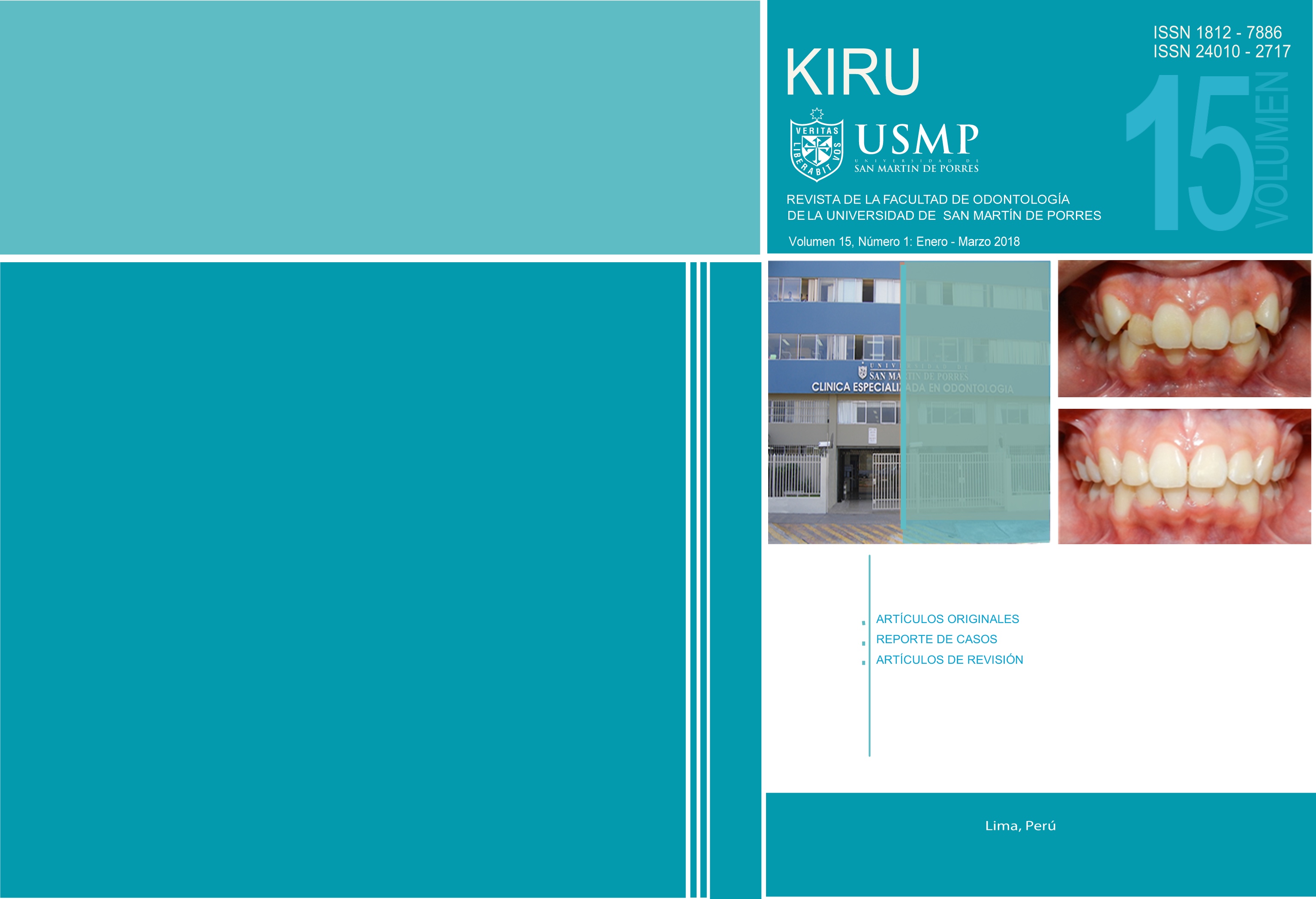Evaluation of the depth of the gingival surco after the use of the retractor 00 thread for class V restorations in patients attended at the dental clinic of the university of The Americas
Keywords:
Gingiva, evaluation, depth of groove, retractor thread.Abstract
Objective: To evaluate the depth of the gingival sulcus after the use of retractor thread 00 for class V restorations. Materials and Methods: For the present investigation, 84 dental pieces were evaluated in 46 patients, both men and women who attended the Clinic of the University of the Americas. Probing and control were performed at 72 hours to determine if it affected the retractor thread at the level of the gingival sulcus. Results: 64.29% of the pieces evaluated showed a change, while 35.71% remained in the normal standard. Regarding the differentiation of gingival biotypes, a greater change in the measurement of the gingival sulcus was obtained in patients with a thin biotype with 64.81% of the pieces evaluated in relation to the gross biotype with 35.19%. In the present study, the existence of bleeding at the level of the gingival sulcus was also determined at the time of the drilling: initial, middle and final. With bleeding results of 7.69%, 34.62% and 57.69% respectively. Conclusion: It was determined that there are significant differences with respect to the depth of the furrow presented in the initial, middle and final drilli ng, however the level of depth of the furrow was higher in the Middle Probe. This confirms that the use of the retractor thread a ffects the periodontium when performing the restorative procedure. In this study it was shown that 64.29% of the pieces evaluated were affected.
Downloads
References
Adrianzén C, Coz M, Noriega J. Evaluación del sondaje in vitro con cuatro sondas periodontales manuales, considerando el factor experiencia del examinador. Revista Estomatológica Herediana. 2010; 20(3): 119-126.
Zerón A. Biotipos, fenotipos y genotipos. ¿Qué biotipo tenemos? (Segunda parte). Revista Mexicana de Periodontología.2011; 2(1): 22-33.
Salazar, J. Métodos de separación gingival en prótesis fija. Acta Odontológica Venezolana. 2007; 45(2).
Reyes F, Mosqueda R. Consideraciones ideales en la toma de impresión dental. Revista ADM. 2001; LVIII(5):183-190.
Gupta A, Prithviraj D, Gupta D, Shruti DP. Clinical Evaluation of Three New Gingival Retraction Systems: A Research Report. J Indian Prosthodont Soc. 2013; 13(1): 36–42.
Nugala, B, Kumar, S, Sahitya, S, Krishna. Biologic width and its importance in periodontal and restorative dentistry. Journal of Conservative Dentistry. 2012; 15(1): 12–17.
Santos E, Lima R, Rocha C. Fractura dental con invasión del espacio biológico - una conducta multidisciplinar. Acta Odontol Venezolana. 2010; 48(1).
Rodriguez, A, Bravo, F, Pomarino S. Manejo del espacio biológico - revisión de literatura. Acta Odontol Venezolana. 2014: 52(3).
Matta E, Alarcon M. Matta C. Espacio biológico y prótesis fija: Del concepto clásico a la aplicación tecnológica. Revista Estomatologica Herediana. 2012; 22(2).
Phatale S, Marawar PP, Byakod G, Lagdive SB, Kalburge JV. Effect of retraction material son gingival health: A histopathological study. Journal of Indian Society of Periodontology. 2010; 14: 35-39.
Baratieri L et al. Odontologia restauradora: fundamentos y técnica, volumen 1. Sao Paulo: Santos, 2011.
Santos P. Por qué y cómo utilizar la cofia en la toma de impresión en prótesis parcial fija. Revista Odontológica Dominicana. 1993; N° 2.
Delgado Pichel A, Inarejos Montesinos P, Herrero Climent M. Espacio biológico. Parte I: La inserción diente-encía. Av Periodon Implantol. 2001; 13,2: 101-108.
Carranza F, NewmanM, Takei H. Carranza's clinical periodontology-9th ed. Philadelphia: W.B. Saunders Co; 2002.
Maheaswari R, GollaUsha R, Logarani A, Sudagaram M, Rohan B. Biologic Width – Critical Zone for a Healthy Restoration. IOSR Journal of Dental and Medical Sciences (IOSR-JDM). 2014; 13(2); 93-98.
Downloads
Published
Issue
Section
License
- Los autores/as conservarán sus derechos de autor y garantizarán a la revista el derecho de primera publicación de su obra, el cuál estará simultáneamente sujeto a la Licencia de reconocimiento de Creative Commons que permite a terceros compartir la obra siempre que se indique su autor y su primera publicación esta revista.
- Los autores/as podrán adoptar otros acuerdos de licencia no exclusiva de distribución de la versión de la obra publicada (p. ej.: depositarla en un archivo telemático institucional o publicarla en un volumen monográfico) siempre que se indique la publicación inicial en esta revista.
- Se permite y recomienda a los autores/as difundir su obra a través de Internet (p. ej.: en archivos telemáticos institucionales o en su página web) posterior al proceso de aprobación del manuscrito, lo cual puede producir intercambios interesantes y aumentar las citas de la obra publicada.







